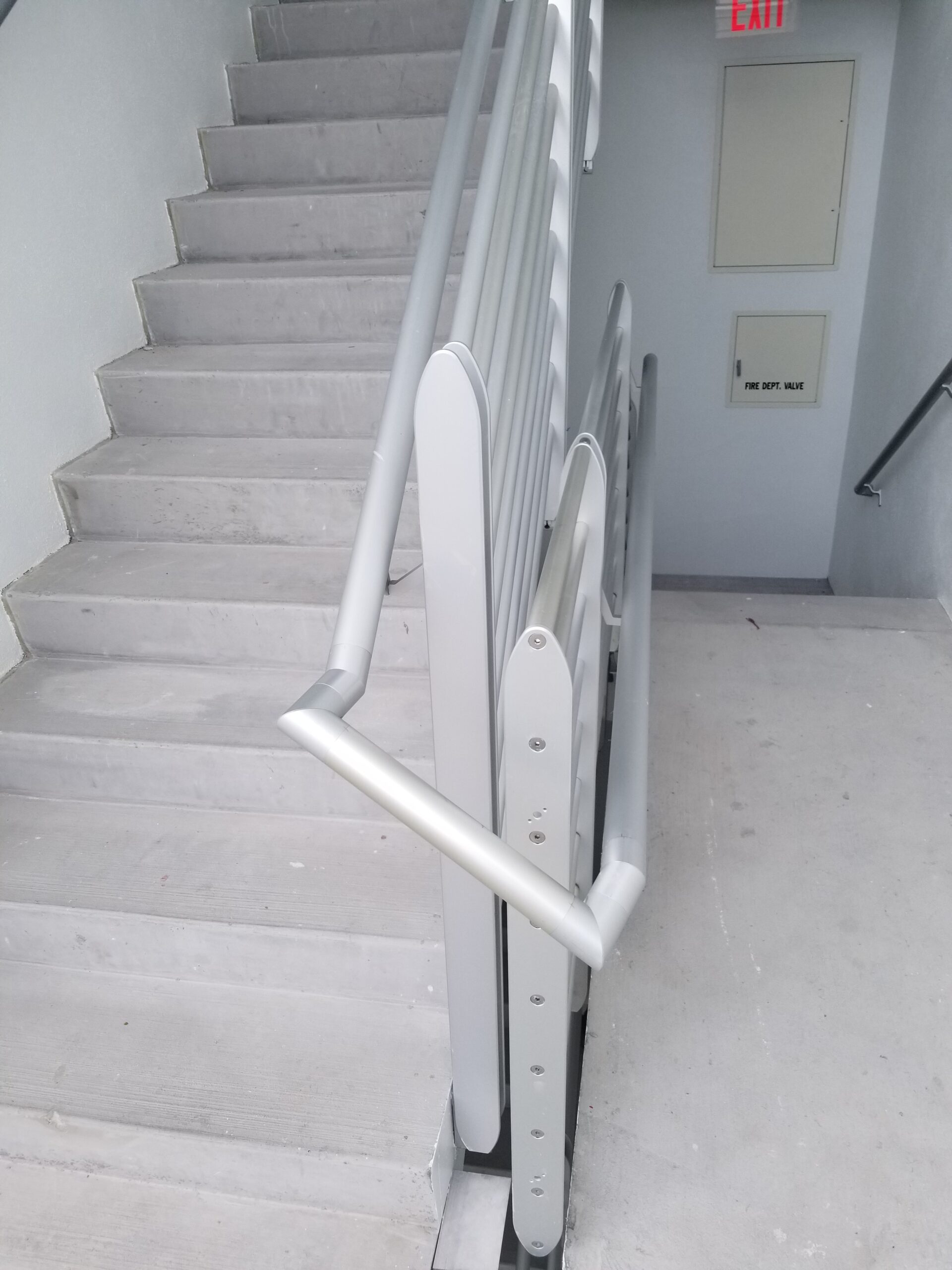Building to Code: Handrail vs. Guardrail
Handrails and guardrails are both terms used to describe a fence or barrier used for guarding or support. Although the two may seem similar, they have their distinct differences.
Handrails
Handrails, also commonly known as banisters, are primarily applied to things such as stairs and ramps. These railings are used for grip, support, and stability while ascending and descending steep surfaces. According to the ADA, this type of railing is required on stairs that include a minimum of four or more steps, it must be at least 1.25 inches, but no more than 2 inches in diameter, be a distance of 1.5 inches from the wall, and include no sharp corners. Handrails should also be able to withstand a force of 200 lbs.
One of the most important qualities of a handrail is its durability. Ensuring that railing is sturdy and durable is vital to the safety of users to protect them from hazardous injuries. A person should be able to firmly grasp their hand around the railing with ease and not fall.
The most common material for handrails is the classic wood due to its ability to be fashioned into any shape and color. Wooden handrails are found more in residential buildings than commercial buildings as commercial buildings tend to be more modernized in their designs. However, more residential buildings are seeing the benefits of having aluminium railing so many new homes are being built or renovated with Green Oxen’s Epulum railing system.
Guardrails
Guardrails, on the other hand, are structures positioned in place under the open spaces that lie beneath handrails for the purpose of averting unintentional falls. Unlike handrails, they are not mandatory unless the slope of the elevation has a 30-inch drop within the bounds of 36 inches.
In commercial buildings, guardrails are not to be less than 42 inches in height. However, in residential buildings, the requirement is shorter than that of commercial buildings–the lowest being 36 inches in height. The opening gaps on the guardrail must be positioned in a manner which prevents a sphere with a diameter of 4-inches from passing through. For pool areas, the railings should be 48 inches in height.
Although guardrails, like handrails, are predominantly made of wood, many other materials are used. Glass guardrails are becoming more popular and contrary to many peoples beliefs, glass is a durable material that provides a more modernized look. Other materials for guardrails include steel, iron, wire, and aluminum.

